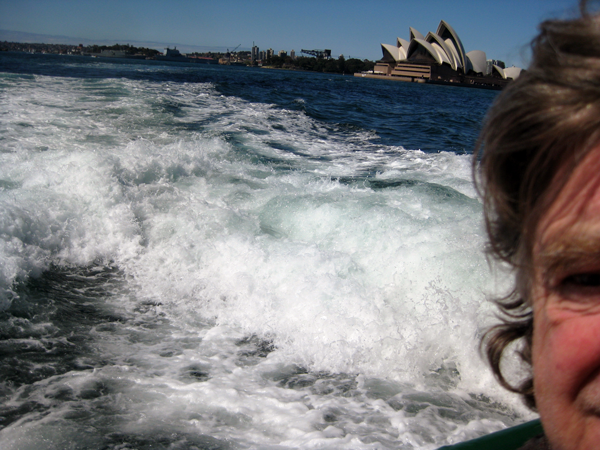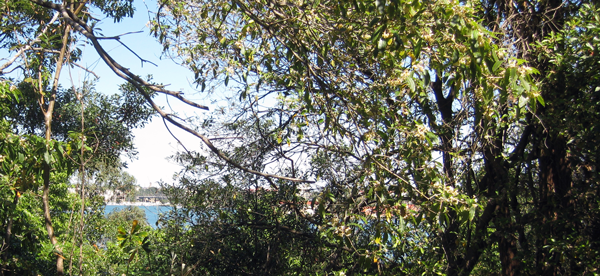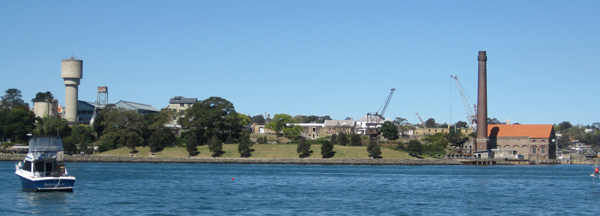Sunday, September 30, 2012
Sunday, September 16, 2012
Common ancestry of life
GTGCCAGCAGCCGCGGTAATTCCAGCTCCAATA GCGTATATTAAAGTTGCTGCAGTTAAAAAG
It looks like gibberish, but this DNA sequence is truly remarkable. It is present in all the cells of your body, in your cat or dog, the fish on your plate, the bees and butterflies in your garden and in the bacteria in your gut.
In fact, wherever you find life on Earth, from boiling hot vents deep under the sea to frozen bacteria in the clouds high above the planet, you find this sequence. You can even find it in some things that aren't technically alive, such as the giant viruses known as mimiviruses.
This sequence is so widespread because it evolved in the common ancestor of all life, and as it carries out a crucial process, it has barely changed ever since. Put another way, some of your DNA is an unimaginable 3 billion years old, passed down to you in an unbroken chain.
New Scientist 15 September 2012
It looks like gibberish, but this DNA sequence is truly remarkable. It is present in all the cells of your body, in your cat or dog, the fish on your plate, the bees and butterflies in your garden and in the bacteria in your gut.
In fact, wherever you find life on Earth, from boiling hot vents deep under the sea to frozen bacteria in the clouds high above the planet, you find this sequence. You can even find it in some things that aren't technically alive, such as the giant viruses known as mimiviruses.
This sequence is so widespread because it evolved in the common ancestor of all life, and as it carries out a crucial process, it has barely changed ever since. Put another way, some of your DNA is an unimaginable 3 billion years old, passed down to you in an unbroken chain.
New Scientist 15 September 2012
Friday, September 14, 2012
Monday, September 10, 2012
Exploring the Harbour - Kelly's Bush
 |
| from the back of the ferry |
 |
| entrance sign |
 |
| Battlers for Kelly's Bush - Local housewives committee with Jack Mundey Miriam Hamilton, Chris Dawson, Betty James, Jo Bell, Judy Taplin, Jack Mundey, Kath Lehany, Monica Sheehan, Joan Croll |
 |
| glimpse the harbour |
 |
| light through the leaves |
 |
| looking across to Cockatoo Island |
 |
| Hunters Hill |
 |
| waiting for the bus - leaf and twig |
During the leadership of Jack Mundey, Bob Pringle and Joe Owens, the BLF was involved in 43 Green Bans. Many were resolved by negotiations during the period from 1971-75.
Examples of Green Bans
KELLY'S BUSH at Hunters Hill remains the only open space and bush land on the Parramatta River. Middle-class women residents of the area sat down in front of the bulldozers. At their request a Green Ban was imposed. Wran Government legislation of the 1980s ensures the bush land will remain forever.
THE ROCKS, the birth place of European Australia, was threatened by high-rise development. The Residents' Action Group led by a wonderful, earthy barmaid, Nita McCrea, staged a great fight with support from the BLF and other unions and saved the historic Rocks for future generations to enjoy. Public housing in the area was saved.
WOOLLOOMOOLOO. The Askin Government wanted to destroy Housing Commission homes in the area and extend the high rise Commercial Business District to the whole area. The Green Ban saved the workers' homes and Tom Uren, Minister for Urban Planning, joined forces with the unions after the Whitlam Government came to power and Woolloomooloo, Sydney's oldest suburb, was saved.
CENTENNIAL PARK. The great writer, Patrick White, and thousands of citizens rose up in anger at the proposal to destroy this huge park which is the lungs of the Eastern Suburbs. A BLF Green Ban won the battle and 33 years on, no one would suggest building on Centennial Park. It was saved forever.
Saturday, September 08, 2012
Joe Owens dies
 |
| Joe Owens - third from left |
Green Ban Fusiliers - Denis Kevans
Owens, who died earlier this week, was secretary of the Builders Labourers Federation (BLF) NSW branch between 1973 and 1975.
With other BLF leaders Jack Mundey and Bob Pringle, Owens was an instrumental part of the Green Bans movement that saved some of Sydney’s now-iconic tourist sites such as The Rocks, the Museum of Contemporary Art building, Woolloomoolloo’s heritage and Centennial Park.
 Owens played a key role in other social issues such as the push for Indigenous and women’s rights and the anti-Vietnam War campaign.
Owens played a key role in other social issues such as the push for Indigenous and women’s rights and the anti-Vietnam War campaign.He was also a key player in the democratisation of the BLF that included a limit on tenure of the executive and was Secretary when BLF Federal Secretary Norm Gallagher took over the NSW Branch and blacklisted the former leaders.
Parker says the union movement has lost an outstanding leader.
“Joe Owens never took a backward step in his commitment to the betterment of workers’ lives.
“Through the Green Bans, with Jack Mundey and Bob Pringle, he sought to save our city from over-development.
“He did this in the belief that workers were not only concerned about better wages and conditions they also wanted to live in a better environment and protect their children’s future.”
Wednesday, September 05, 2012
Those Old Village Houses
Subscribe to:
Posts (Atom)




















